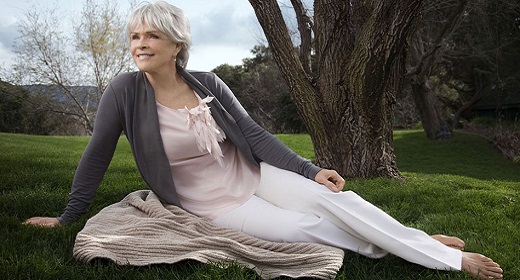by Cjliu: Byron Katie shares how she created the four questions that are part of The Work…
a process of inquiry featured in her book “Loving What is”. Find more peace, love, and freedom through using this extremely powerful and simple set of questions to change your life. Plus, see a live demonstration on how to use The Work (e.g. -spiritual rape)All excerpts in this blog post are from Byrnon Katie – Loving What Is
Katie, B., & Mitchell, S. (2002). Loving what is: Four questions that can change your life. New York: Harmony Books.
BYRON KATIE’S PERSONAL TRANSFORMATION. HOW SHE CAME UP WITH THE WORK?
In her book “Loving What Is”, Byron Katie describes her transformation from an angry depressed mom to a joy filled, awakened being.
“In the midst of an ordinary life- two marriages, three children, a successful career-Katie entered a ten-year-long downward spiral into rage, paranoia, and despair. For two years she was so depressed that she seldom managed to leave her home; she stayed in bed for weeks at a time, doing business by telephone from her bedroom, unable even to bathe or brush her teeth. Her children would tiptoe past her door to avoid her outbursts of rage. Finally, she checked into a halfway house for women with eating disorders, the only facility that the insurance company would pay for. The other residents were so frightened that she was placed alone in at attic room.
One morning, a week or so later, as she lay on the floor, Katie woke up without any concept of who or what she was. “There was no me, “ she says.
All my rage, all the thoughts that had been troubling me, my whole world, the whole world, was gone. At the same time, laughter welled up from the depths and just poured out. Everything was unrecognizable. It was as if something else had woken up. It opened its eyes. It was looking through Katie’s eyes. And it was so delighted! It was intoxicated with joy. There was nothing separate, nothing unacceptable to it; everything was its very own self.” P x
Her daughter shares her observations on Katie’s transformation:
“We knew that the constant storm was over. She had always yelled at me and my brothers and criticized us. I used to be scared to be in the same room with her. Now she seemed completely peaceful. She would sit still for hours on the window seat or out in the desert. She was joyful and innocent, like a child, and she seemed to be filled with love. People in trouble started knocking on our door, asking her for help. She’d sit with them and ask them questions—mainly, “Is that true?” When I’d come home miserable, with a problem like, ”My boyfriend doesn’t love me anymore,” Mom would look at me as if she knew that wasn’t possible, and she’d ask me, “Honey, how could that be true?” as if I had just told her that I was living in China”. pxi
WHAT IS THE SCIENCE BEHIND THE WORK?
Neuroscientists have identified a particular part of the brain referred to as “the interpreter”, which is the part that provides a narrative to our sense of self. The purpose of the interpreter is to explain why we do the things we do by examining the brain activities behind our actions. Byron Katie’s The Work is designed to flag the mental activity that creates the narrative we become attached to and change our relationship to it.
“Perhaps the most important revelation is precisely this; that the left cerebral hemisphere of humans is prone to fabricating verbal narratives that do not necessarily accord with the truth”. Antonio Damasio, Damasio, A. (1999). The feeling of what happens: Body and emotion in the making of consciousness New York: Harcourt Brace, p. 187.
“The left brain weaves its story in order to convince itself and you that it is in full control. What is so adaptive about having what amounts to a spin doctor in the left brain? The interpreter is really trying to keep our personal story together. To do that, we have to learn to lie to ourselves.” Michael Gazzaniga, “The Mind Body Past (University of California Press, 1998), p26.
HOW WILL YOUR LIFE CHANGE FROM DOING THE WORK?
According to Bryon Katie, The Work brings to life an innate aspect of our being. She notes that over time, the students that have gone deeper into The Work find that they suffer less.
What Katie’s student’s say: “The work is no longer something I do. It is doing me. They describe how, without any conscious intention, the mind notices each stressful thought and undoes it before it causes any suffering. Their internal argument with reality has disappeared, and what remains is love for themselves, for people and whatever life brings” xiii
“Suffering is caused by attachment to a deeply embedded belief. It’s a state of blind attachment to something that you think is true. In this state, it’s very difficult to do The Work for the love of truth, because you are invested in your story. Your story is your identity and you’d do almost anything to prove that it’s true. Inquiry into self is the only thing that has the power to penetrate such ancient concepts’. P293
Katie describes how she now relates to the realities that are presented to her and how she is accepting the world “as it is”. Because of The Work, she has achieved a fearless mindset and it feels like heaven.
“I am a lover of what is, not because I’m a spiritual person, but because it hurts when I argue with reality. We can know that reality is good just as it is, because when we argue with it, we experience tension and frustration. I don’t feel natural or balanced. When we stop opposing reality, action becomes simple, fluid, kind and fearless.” P3
“Life is heaven, except for our attachment to a story that we haven’t investigated.” P187
“If I’m not clear (not clear on my thoughts), then I’m going to project all my craziness out onto the world, as the world, and I’ll perceive a crazy world and think that it is the problem. We’ve been working on the projected image for thousands of years and not the projector. That’s why life seems to be chaotic. It’s chaos telling chaos how to live differently, and never noticing that it has always lived that way and that we have been going about it backward, absolutely backward. So you don’t drop your thoughts of chaos and suffering out there in the apparent world. You can’t drop them, because you didn’t make them in the first place. But when you meet your thoughts with understanding, the world changes. It has to change, because the projector of the entire world is you. You’re it! P198
MY BUSINESS, YOUR BUSINESS, AND GOD’S BUSINESS
One of the benefits of The Work is that it frees you from unfeasible thoughts that ultimately cause us stress. A most common example is to damn another person because their behavior or belief doesn’t resonate with our view of the world.
In our judgments of others, we move from our business to the business of another. For example, we may think to ourselves, “You need to get a job; you should be on time; you need to take better care of yourself”. These statements are examples of involving ourselves in someone else’s business.
In contrast, when we worry about global warming, earthquakes, or when we will die, then we’re encroaching into God’s business. Meddling begets neglect. In other words, we disregard our own business because we’re too busy imposing into someone else’s. Ultimately, our business is the only business we have any control over. Katie points out that neglecting our business creates a separation from ourselves. The only business we should be concerned about is “what is right for me”.
Another way to think about this idea is changing our analysis of the situation. To think we know what is best for someone else may actually demonstrate a place of pure arrogance, which can result in tension, anxiety, and fear.
THE FOUR QUESTIONS
The Work is made up of the four questions below. You can find additional information on these questions and instructions on what to do by visiting Katie’s website: http://thework.com/en/do-work.
Below are some excerpts from “Loving What is” for deeper comprehension of each question.
QUESTION 1: IS IT TRUE?
The book points out some additional follow up questions to “Is it True”?.
- What’s the reality of the situation? Katie points out that reality is what is true and what is really happening. By seeing what reality it is, it leaves us free to act efficiently, clearly, and sanely.
- Whose business is it? (see above section for more information)
EXAMPLE: MY SON SHOULD HONOR HIS COMPUTER LIMITS.
- Lots of research that kids need to limit the time on computers and media generally.
- It’s my son’s business, but I’m his parent and my business is making sure he is engaging in behavior that is beneficial to his safety and well being.
QUESTION 2: CAN YOU ABSOLUTELY KNOW IT’S TRUE?
If you answered “yes” to question one, the process asks you to dive deeper into your thought. Katie points out that this was born out of awareness that the truth is not dictated by any person; The world is always as it should be. She offers additional questions to dig deeper into question 2, especially if you are judging another person’s behavior or belief:
- Can you absolutely know what’s going on inside someone else’s mind? Can you absolutely know what another person is feeling, even when they tell you? Can you be certain that they are clear with their own thoughts and emotions?
- Can you even be certain about your own feelings of hurt? Is your thought really the cause of your pain?
- Can you really know that your ideas for the other person are best for that person’s life path?
If you still think it’s true, then Katie suggest that you consider these ideas:
- Take your statement and add “and it means that”.
- What do you think you would have if reality fully cooperated with you?
- What is the worst that can happen?
- What’s the “should”? What must the other person do to meet your expectations?
- Where’s your proof?
EXAMPLE: MY SON SHOULD HONOR HIS COMPUTER LIMITS.
- If my son is always plugged in it means that he will lose his social skills and ability to fit into societal norms. Can I absolutely know this is true? No
- If reality cooperated with me, my son would not be interested in video games, YouTube videos, and would be more involved with a variety of other positive activities. Can I absolutely know this is true? No
- The worst possible outcome is that my son spent so much time on the computer that he losses valuable time to discover his passions in life. Can I absolutely know this is true? No
- My son should limit his media time because he knows the research on its harm and on his life.
- Proof: American Medical Association has done studies that suggest only 2 hours.
QUESTION 3: HOW DO YOU REACT WHEN YOU THINK THAT THOUGHT?
This inquiry helps you understand the internal cause and effect on believing a thought. Katie shares a personal experience of when she questioned her thought that people should be more loving. She explains that when she moved to stillness and saw mental pictures created from that thought, she began to sense her unease, sadness and guilt. She saw the suffering created by that thought.
The inquiry loosens the attachment to a thought. Katie cautions that inquiry is not about getting rid of your thoughts; it’s about realizing what’s true for you through awareness and unconditional self-love. Once you see the truth, the thought lets go of you, not the other way around. Here are some additional questions to explore the effect of your thoughts.
- Can you see a reason to drop that thought?
- Can you find one stress-free reason to keep the thought?
EXAMPLE: MY SON SHOULD HONOR HIS COMPUTER LIMITS.
- Worse case scenarios make me go into a place of fear and judgment of myself and my son.
- I’m the parent and am responsible for setting clear boundaries for what will keep him safe.
QUESTION 4: WHO WOULD YOU BE WITHOUT THE THOUGHT?
Katie suggests that you close your eyes and envision the person you judged is sitting in front of you. Remove your story and notice how things have changed, then answer the following questions:
- Who or what would you be without the thought?
- What do you see?
- How do you feel without the story?
- Which do you prefer- with or without the story?
- Which feels kinder? Which feels more peaceful?
- How do you react when you think the thought?
- How do you treat others when you believe this thought?
- Were your feelings the result of the other person or your own judgments about it?
As we answer question 4, we no longer identify with the thought but with the reality of the moment. After you complete this inquiry, the next powerful step is the turnaround. This phase allows you to own the problem versus project it “out there” onto someone else. You realize that your fears were being projected onto someone else so you turn those thoughts around to examine if they deem true or truer when applied to you.
- Turnaround the statement on yourself.
- Turn it around to the other person.
- Turn it around to the opposite.
- I am willing to… I look forward to
EXAMPLE: MY SON SHOULD HONOR HIS COMPUTER LIMITS.
- Less fear-based and more love-based when working on setting limits.
- I’m calm and rationally talking about limits versus going hysterical, which feels kinder.
- Turnaround:
- I should honor my computer limits
- I should honor my son’s computer limits
- My son should honor his computer limits
- I am willing to be flexible with computer limits. I look forward to when my son doesn’t honor his computer limits.









































